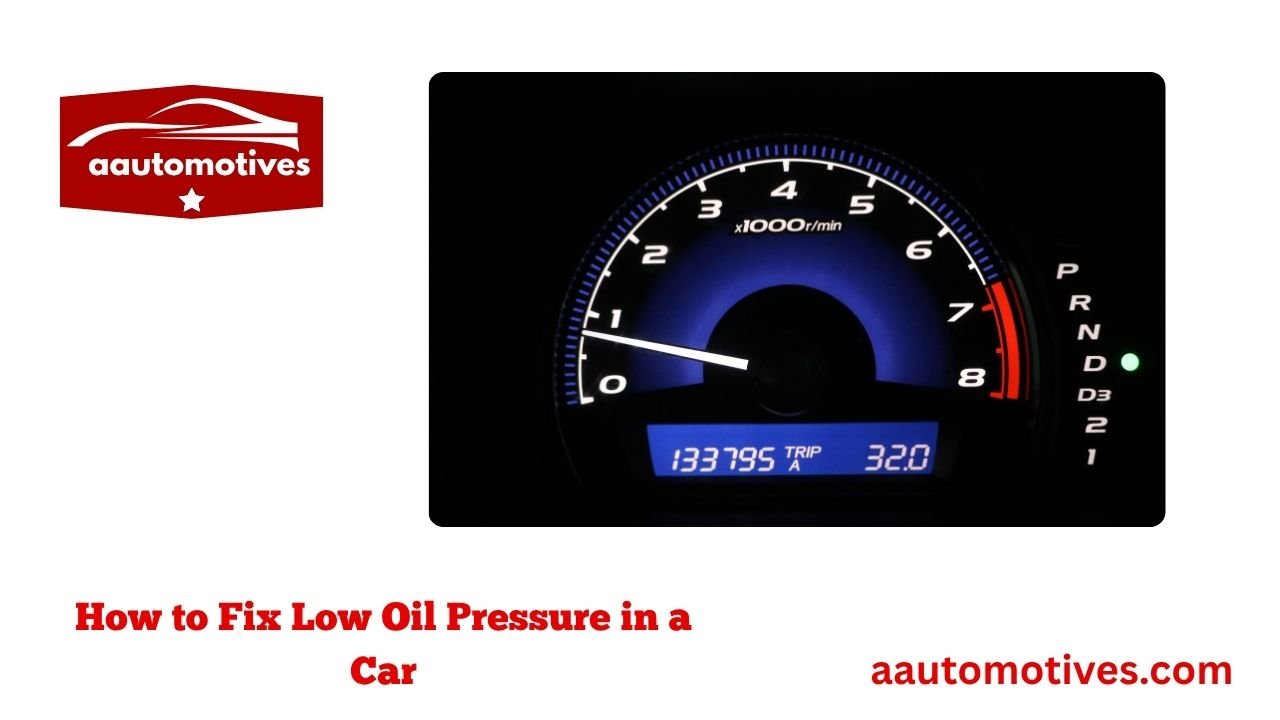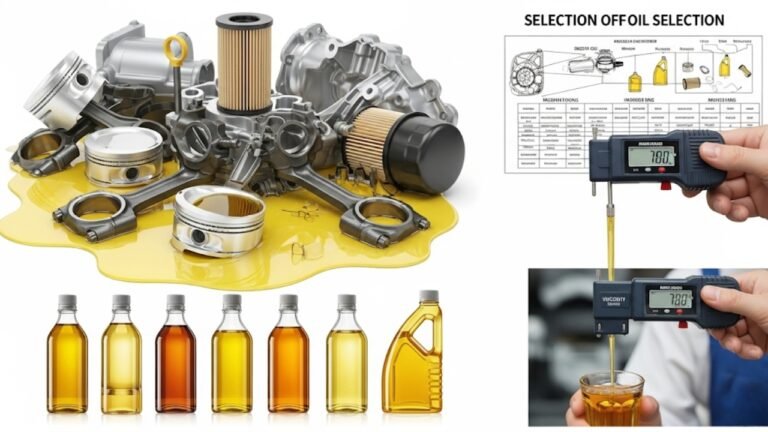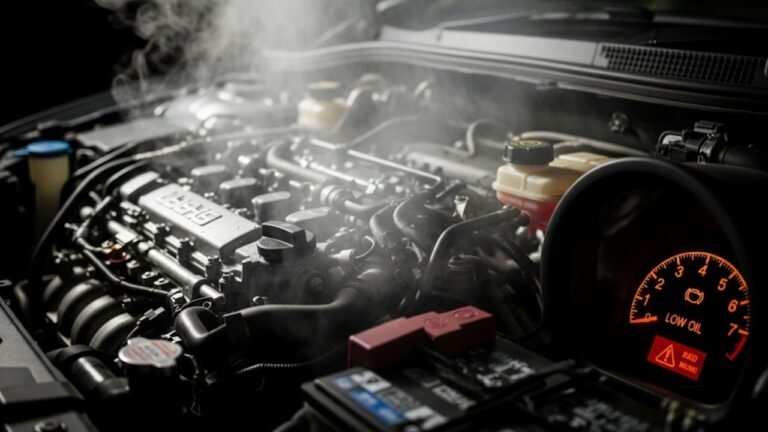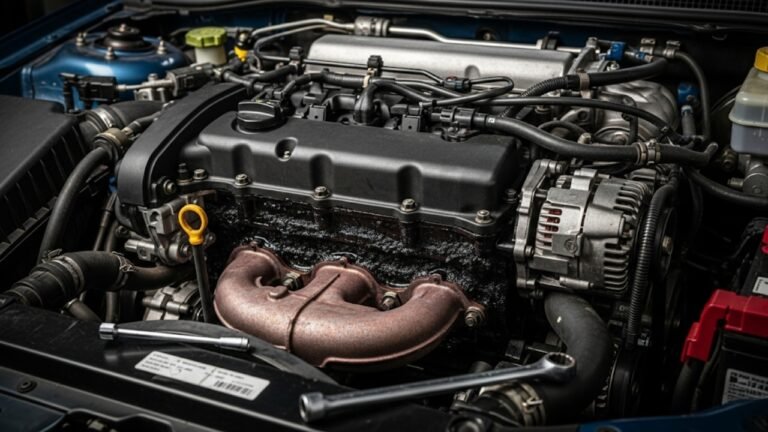How to Fix Low Oil Pressure in a Car

Ever seen that little red oil can light up on your dashboard and felt your heart drop? That’s your car’s way of saying, “Help me!” Low oil pressure isn’t just a small issue—it can quickly turn into a blown engine if ignored. Knowing how to fix low oil pressure in a car is not only essential to keep your vehicle running smoothly, but it could also save you thousands in repairs.
In this guide, I’ll walk you through why oil pressure drops, how to spot the early signs, and most importantly, how to fix low oil pressure in a car with real, practical steps. I’ll share some personal insights too—like the time I almost ruined my old Honda Civic because I didn’t act fast enough.
Whether you’re new to car maintenance or someone who’s been wrenching on engines for years, this guide is designed to be easy to understand, practical, and totally relatable. Grab a cup of coffee, and let’s get into it.
In This Article
- 1 Understanding What Oil Pressure Actually Does
- 2 Common Causes of Low Oil Pressure in a Car
- 3 Step 1: Check the Oil Level First
- 4 Step 2: Change the Oil and Filter
- 5 Step 3: Inspect for Oil Leaks
- 6 Step 4: Test or Replace the Oil Pressure Sensor
- 7 Step 5: Inspect the Oil Pump
- 8 Step 6: Check for Worn Engine Bearings
- 9 Step 7: Make Sure You’re Using the Correct Oil Viscosity
- 10 Step 8: Clean or Replace the Oil Pickup Tube
- 11 Step 9: Flush the Engine (Optional but Helpful)
- 12 Prevention Tips: How to Avoid Low Oil Pressure in the Future
- 13 FAQs: How to Fix Low Oil Pressure in a Car
- 13.1 Can I drive with low oil pressure?
- 13.2 How much does it cost to fix low oil pressure?
- 13.3 Does synthetic oil affect oil pressure?
- 13.4 Why does the oil pressure drop at idle?
- 13.5 How can I test oil pressure at home?
- 13.6 Can a clogged filter cause low pressure?
- 13.7 Is it okay to use engine flush?
- 13.8 Should I replace the oil pressure sensor myself?
- 14 Final Thoughts: Trust Your Instincts and Your Engine
Understanding What Oil Pressure Actually Does

You might notice warning signs like:
-
The oil pressure warning light turns on.
-
Engine noise like ticking or knocking.
-
A burning oil smell.
-
Poor engine performance or stalling.
Oil pressure is like blood pressure for your car. Low pressure means something’s wrong. The goal here is not just to top up oil and hope for the best, but to diagnose and fix the root problem. Trust me, your wallet will thank you later.
Common Causes of Low Oil Pressure in a Car
If your car shows low oil pressure, it could be caused by a range of issues. These are the usual suspects:
-
Low oil level (most common and easiest fix)
-
Dirty or old oil
-
Faulty oil pump
-
Worn engine bearings
-
Clogged oil filter
-
Oil leaks
-
Faulty oil pressure sensor
-
Wrong oil viscosity
I once had a friend who used cheap, thin oil during a heatwave. Within weeks, his car’s oil pressure plummeted. The lesson? Use the right oil, and change it regularly.
Here’s a quick table to help you spot the culprit:
| Problem | Symptom | Quick Check | Fix |
|---|---|---|---|
| Low oil | Oil light on, engine louder | Dipstick check | Add correct oil |
| Dirty oil | Thick, dark oil | Pull dipstick, check color | Change oil + filter |
| Bad pump | No oil flow | Listen for whining | Replace oil pump |
| Worn bearings | Knocking sounds | Engine inspection | May need rebuild |
| Clogged filter | Slow oil flow | Oil change history | Replace filter |
| Leaks | Puddles under car | Check seals and pan | Reseal, replace parts |
| Faulty sensor | False alarm | Scan tool | Replace sensor |
Now, let’s roll up our sleeves and get into how to fix low oil pressure in a car, step-by-step.
Step 1: Check the Oil Level First
Sounds basic, right? But you’d be shocked how many people overlook this. It takes two minutes.
-
Park your car on level ground.
-
Turn off the engine and wait 5 minutes.
-
Pull out the dipstick, wipe it clean, reinsert it, and check the level.
If the oil is low, top it up with the manufacturer-recommended oil type. Be careful not to overfill—it can cause its own problems. If the oil is clean and the pressure returns to normal, congrats! You just saved yourself a trip to the shop.
Still low pressure? Let’s dig deeper.
Step 2: Change the Oil and Filter
Old, dirty oil can’t do its job well. Over time, it thickens, collects debris, and stops flowing smoothly—causing pressure to drop. Changing the oil and filter is one of the simplest and most effective fixes.
Here’s what you’ll need:
-
The right engine oil (check your manual)
-
A new oil filter
-
A wrench and drain pan
Follow this simple process:
-
Drain the old oil (make sure the engine is warm).
-
Replace the oil filter.
-
Refill with clean, high-quality oil.
-
Start the engine and check for leaks or lights.
This small job often solves 50% of low oil pressure issues, especially in cars overdue for maintenance.
Step 3: Inspect for Oil Leaks
Sometimes your engine’s losing oil faster than you can add it. Look for fresh oil stains under your car or signs of wetness around the oil pan, valve covers, or gasket seals.
When I had an old Ford Escape, I used to find little puddles in the garage. It turned out the oil pan gasket was cracked. A quick reseal fixed everything—and the pressure returned to normal.
Oil leaks not only cause pressure loss but can lead to engine overheating. Don’t ignore them.
Step 4: Test or Replace the Oil Pressure Sensor
Here’s where things get tricky. Sometimes, there’s nothing actually wrong with your engine—but the oil pressure sensor is giving false readings.
How to tell? Use an OBD2 scanner to read the error code. If the sensor’s bad, it’ll show up.
Replacing it is often simple:
-
Locate the sensor (usually near the oil filter).
-
Disconnect the wire.
-
Unscrew the sensor and replace it with a new one.
This small part can cause big stress—but the fix is cheap and easy.
Step 5: Inspect the Oil Pump
This is one of the more serious causes of low oil pressure. If your oil pump isn’t working right, oil doesn’t circulate. You’ll hear odd noises and the engine may start to overheat.
Inspecting or replacing the oil pump is a bigger job:
-
You’ll need to remove the oil pan.
-
Check the pump gears and screen.
-
If clogged or damaged, replace the pump.
Unless you’re confident with tools, this might be a job for your mechanic. But knowing about it helps you talk knowledgeably when you take the car in.
Step 6: Check for Worn Engine Bearings
This is where things get serious. If you’ve already tried the basic fixes and your oil pressure is still low, worn engine bearings might be the reason. These bearings are what the crankshaft and camshaft spin on. Over time, they wear out and create gaps, causing the oil to escape more easily—resulting in lower pressure.
A buddy of mine once drove his car for months with low oil pressure, thinking it was just a sensor. Eventually, his engine seized. The culprit? Completely worn-out rod bearings. The repair cost him more than the car was worth.
If your car has high mileage, and you’re hearing a deep knocking sound from the engine, it’s a red flag. There’s no DIY fix here—you’ll need a professional engine inspection. In some cases, the engine may need to be rebuilt or replaced.
Step 7: Make Sure You’re Using the Correct Oil Viscosity
This one might surprise you. The wrong oil viscosity can directly affect oil pressure. Every car engine is designed to work with a specific oil type—like 5W-30 or 10W-40. If the oil is too thin (especially in hot climates), it flows too fast and doesn’t build enough pressure. If it’s too thick (especially in cold weather), it can clog up and stress the oil pump.
Always check your owner’s manual. Using the right oil not only protects the engine but also maintains the proper oil pressure. I made the mistake once of using 0W-20 in a car that needed 10W-30. I noticed poor performance and a flickering oil light until I switched back.
Step 8: Clean or Replace the Oil Pickup Tube
One of the most overlooked parts is the oil pickup tube. This little component sits inside your oil pan and helps the pump suck oil up into the engine. Over time, sludge, debris, or even broken parts can clog it, choking off the oil supply.
If your oil pressure light stays on even after an oil change and pump inspection, the pickup tube could be blocked. You’ll need to:
-
Drop the oil pan,
-
Remove and clean the pickup screen and tube,
-
Replace if it’s damaged.
This isn’t something most people enjoy doing, but it’s worth it if everything else checks out. Keeping the oil system clean from top to bottom is essential for long-term health.
Step 9: Flush the Engine (Optional but Helpful)
If you suspect sludge buildup inside your engine, you can do an engine flush. This process involves adding a special cleaning additive to your oil before changing it. It helps break down sludge and buildup that might be restricting oil flow.
Be cautious, though. On very old engines, flushing can loosen too much gunk at once, potentially clogging oil passages. It’s best used as a preventive maintenance method, not a desperate fix.
Still, I’ve used it successfully in a Toyota Corolla that had inconsistent oil pressure. After the flush and oil change, the engine ran smoother and quieter—and the warning light stayed off for good.
Prevention Tips: How to Avoid Low Oil Pressure in the Future
Once you’ve fixed the problem, the next step is prevention. You don’t want this to happen again. Here’s how to keep your oil pressure in check:
-
Change your oil every 3,000 to 5,000 miles (or as recommended).
-
Use the right oil type and filter every time.
-
Listen for engine noises, especially after startup.
-
Fix oil leaks the moment you spot them.
-
Don’t ignore warning lights—your dashboard is your best friend.
-
Inspect the oil pressure sensor during regular service.
It’s like going to the gym for your engine. A little routine care goes a long way.
FAQs: How to Fix Low Oil Pressure in a Car
Can I drive with low oil pressure?
No. Driving with low oil pressure can damage your engine in minutes. If the warning light comes on, pull over, turn off the engine, and check the oil level.
How much does it cost to fix low oil pressure?
It depends. A simple oil change might cost $50. A new oil pump could run $300-$800. An engine rebuild? Up to $5,000 or more. That’s why early diagnosis is so important.
Does synthetic oil affect oil pressure?
Yes. Synthetic oil flows more smoothly and can sometimes lower pressure in older engines if the viscosity is too low. Always use the correct type recommended for your vehicle.
Why does the oil pressure drop at idle?
This can be normal in some cars, especially older ones. But if the pressure is very low or the warning light comes on, it could indicate a weak oil pump or worn bearings.
How can I test oil pressure at home?
You can buy a mechanical oil pressure gauge and connect it to the port where the sensor sits. It gives a real-time, accurate reading—great for diagnosing issues.
Can a clogged filter cause low pressure?
Absolutely. A clogged filter restricts oil flow, which can lower pressure and even starve the engine. Always replace the filter during oil changes.
Is it okay to use engine flush?
Yes, if used carefully. Avoid using it in engines with very high mileage and no service history—it might dislodge too much sludge at once.
Should I replace the oil pressure sensor myself?
If you’re handy with tools, yes. It’s often just a plug-and-play fix. But be sure to confirm that the sensor is actually the problem before replacing it.
Final Thoughts: Trust Your Instincts and Your Engine
Fixing low oil pressure isn’t about guessing—it’s about paying attention. Your car will usually tell you something’s off. The key is to listen early.
From topping off oil to replacing pumps or bearings, knowing how to fix low oil pressure in a car can save your engine and your money. Some issues are small, others serious—but either way, acting quickly makes all the difference.
I’ve learned the hard way that a little red light on your dashboard isn’t just a nuisance. It’s your car’s SOS call. And now that you know what to look for and how to respond, you can keep your vehicle running smoothly and safely for years to come.
Whether you’re a weekend DIYer or someone who just wants to stay informed, I hope this guide gave you the knowledge and confidence to handle the issue head-on.
If you found this helpful, feel free to share it with a friend who might be stressing over that oil light too. Safe driving!






